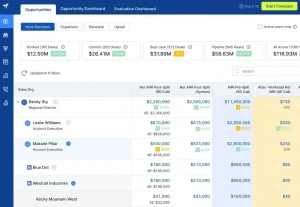
While cash is the most basic resource in any business, capital is much more valuable. This is because it can be invested and generate more cash than cash. Accounting professionals view capital as an asset because it can be re-contributed and thus generate more value. To determine the capital in your accounting records, you should invest in a reliable software solution. The following are some key factors to consider when determining capital. To avoid losing out on your profit, make sure your records are accurate.
Your balance sheet shows your capital structure, which includes your total assets, liabilities, and equity. Some companies raise cash by selling stock, while others borrow money. In any case, your working capital is the amount of money your business needs to meet its day-to-day financial obligations. You should also know how much of your capital is used to make investments and incur debt. These investments are necessary to grow your business. In addition to financing your operations, you must also consider your cash flow to meet your goals.
The capital in accounting formula is simple but requires constant service. The value of your assets must be greater than your liabilities. You should also keep in mind that cash expenditures in a business are reported as debts to the owners. This means that depreciation will be taken into account. Also, normal wear and tear is reflected in your financial statements, thereby offsetting your tax liabilities. Lastly, when you invest in capital, you are also investing in the future of your business.
Depending on the type of business you run, you may need to have different capital accounts for the same type of assets. Here are some major types of capital accounts:
Whether you’re starting a new business, expanding an existing one, or taking on a new one, capital is essential for your operation. You can take out a loan or sell your accounts receivable to a factoring company, utilizing the equity of your building to get a second mortgage. It’s essential to consider the long-term benefits of capital. Capital is the foundation of income measurement. The long-term value of your company’s assets is measured by the amount you spend on capital.
Paid-in capital refers to the money provided by the shareholders. This money is recorded as common stock in the books of accounts. Additionally, organizations record contributed capital as additional paid-in capital if the shares are sold directly to investors. It’s important to note that contributed capital can be used to buy additional shares of the company. If the shares are sold directly to shareholders, the amount of contributed capital is known as common stock. The difference between the two types of capital is the par value of the shares.
The amount of capital an organization has depends on the type of business it operates in. Some capital is available from banks or private sources, while others come from other sources. In addition, the amount of equity capital can be obtained from a sale of stock, while other capital is raised through the contribution of the business owner. Capital can also be a business’s human capital, such as the skills, knowledge, experience, attitude, and health of its employees. By investing in the human capital of your employees, you can improve their performance and ensure a productive workplace.





